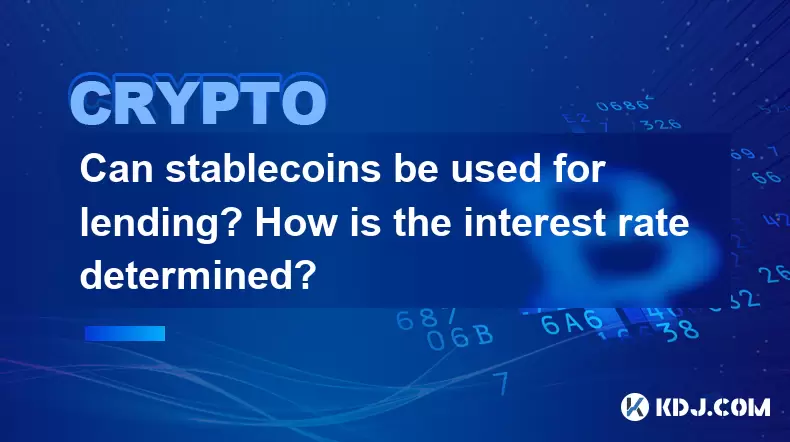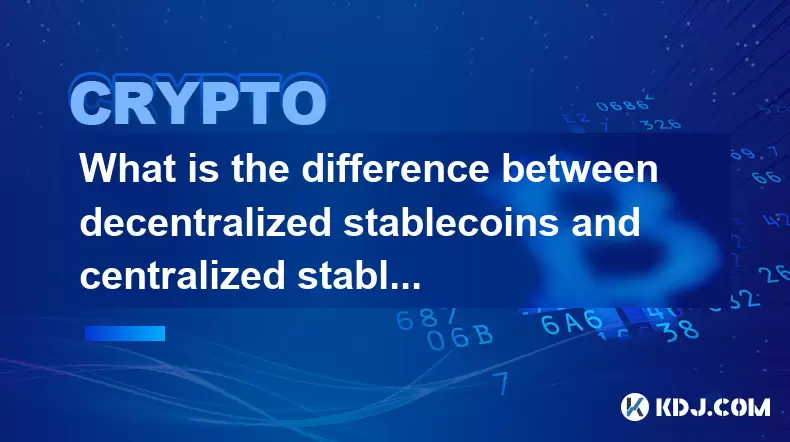-
 Bitcoin
Bitcoin $113900
-1.39% -
 Ethereum
Ethereum $3517
-4.15% -
 XRP
XRP $3.009
1.59% -
 Tether USDt
Tether USDt $0.9997
-0.04% -
 BNB
BNB $766.8
-1.41% -
 Solana
Solana $164.6
-2.38% -
 USDC
USDC $0.9998
-0.02% -
 TRON
TRON $0.3277
0.65% -
 Dogecoin
Dogecoin $0.2023
-1.67% -
 Cardano
Cardano $0.7246
0.05% -
 Hyperliquid
Hyperliquid $38.27
-4.77% -
 Sui
Sui $3.528
-0.52% -
 Stellar
Stellar $0.3890
-0.73% -
 Chainlink
Chainlink $16.16
-2.69% -
 Bitcoin Cash
Bitcoin Cash $539.9
-4.38% -
 Hedera
Hedera $0.2425
-2.00% -
 Avalanche
Avalanche $21.71
-0.97% -
 Toncoin
Toncoin $3.662
5.73% -
 Ethena USDe
Ethena USDe $1.000
-0.02% -
 UNUS SED LEO
UNUS SED LEO $8.964
0.35% -
 Litecoin
Litecoin $107.7
2.33% -
 Shiba Inu
Shiba Inu $0.00001223
-0.40% -
 Polkadot
Polkadot $3.617
-0.97% -
 Uniswap
Uniswap $9.052
-2.49% -
 Monero
Monero $295.1
-3.79% -
 Dai
Dai $0.9999
0.00% -
 Bitget Token
Bitget Token $4.315
-1.85% -
 Pepe
Pepe $0.00001060
0.11% -
 Cronos
Cronos $0.1342
-2.72% -
 Aave
Aave $256.0
-0.87%
Can stablecoins be used for lending? How is the interest rate determined?
Stablecoins, pegged to stable assets like the USD, are used in DeFi for lending, allowing users to earn interest through platforms like Aave and Compound.
May 17, 2025 at 10:14 pm

Stablecoins, a type of cryptocurrency designed to minimize the volatility typically associated with digital assets, have become increasingly popular in the world of decentralized finance (DeFi). One of the key applications of stablecoins is in lending and borrowing, which has opened up new avenues for users to earn interest on their holdings. In this article, we will explore how stablecoins can be used for lending and delve into the mechanisms that determine the interest rates in these transactions.
What are Stablecoins and Why are They Used for Lending?
Stablecoins are cryptocurrencies that are pegged to a stable asset, such as the US dollar, to maintain a consistent value. This stability makes them an attractive option for lending and borrowing within the DeFi ecosystem. Unlike other cryptocurrencies that can experience significant price fluctuations, stablecoins offer a more predictable value, which is crucial for financial transactions like lending.
The use of stablecoins for lending is facilitated by various DeFi platforms that allow users to deposit their stablecoins into lending pools. These pools are then used to provide loans to other users, who in turn pay interest on the borrowed amount. This process not only allows lenders to earn passive income but also provides borrowers with access to liquidity without the need for traditional financial intermediaries.
How Does Stablecoin Lending Work?
Stablecoin lending operates through decentralized lending protocols, which are smart contracts that manage the lending and borrowing process. Here's a detailed look at how it works:
- Depositing Stablecoins: Users deposit their stablecoins into a lending pool on a DeFi platform. This action increases the total liquidity available for lending.
- Borrowing Stablecoins: Other users can then borrow these stablecoins by providing collateral, usually in the form of other cryptocurrencies. The collateral ensures that the loan can be repaid even if the borrower defaults.
- Interest Accrual: The borrowed stablecoins accrue interest over time, which is distributed to the lenders based on their share of the lending pool.
- Repayment: Borrowers repay the loan with interest, and the stablecoins are returned to the lending pool, ready to be lent out again.
This system creates a continuous cycle of lending and borrowing, with interest rates playing a crucial role in balancing supply and demand.
How are Interest Rates Determined in Stablecoin Lending?
Interest rates in stablecoin lending are determined by a combination of factors, primarily driven by the dynamics of supply and demand within the lending pool. Here are the key elements that influence interest rates:
- Supply of Stablecoins: The amount of stablecoins deposited into the lending pool affects the interest rate. A higher supply of stablecoins typically leads to lower interest rates, as there is more liquidity available for borrowing.
- Demand for Loans: The demand for borrowing stablecoins also impacts the interest rate. Higher demand for loans can drive up interest rates, as borrowers are willing to pay more to access the available liquidity.
- Utilization Rate: The utilization rate of the lending pool, which is the percentage of the pool's total assets that are currently lent out, is a critical factor. A higher utilization rate often results in higher interest rates, as it indicates a higher demand for borrowing relative to the available supply.
- Platform-Specific Algorithms: Many DeFi platforms use algorithms to dynamically adjust interest rates based on the above factors. These algorithms aim to maintain a balance between incentivizing lenders to deposit their stablecoins and ensuring that borrowers can access the liquidity they need.
Examples of Stablecoin Lending Platforms
Several DeFi platforms have emerged as leaders in stablecoin lending, each with its own unique features and interest rate mechanisms. Here are a few notable examples:
- Aave: Aave is a popular DeFi lending platform that supports a wide range of stablecoins. It uses a variable interest rate model that adjusts based on the utilization rate of the lending pool. Users can deposit stablecoins to earn interest or borrow against their collateral.
- Compound: Compound is another well-known platform that allows users to lend and borrow stablecoins. It uses an algorithmic interest rate model that adjusts rates based on the supply and demand of the lending pool. Users can earn COMP tokens as rewards for participating in the lending and borrowing activities.
- MakerDAO: MakerDAO is known for its DAI stablecoin, which is pegged to the US dollar. Users can lock up collateral to generate DAI, which can then be used for lending and borrowing. The interest rates on DAI loans are determined by the stability fee set by the Maker governance system.
Risks and Considerations in Stablecoin Lending
While stablecoin lending offers attractive opportunities for earning interest, it is not without risks. Here are some key considerations for users engaging in stablecoin lending:
- Smart Contract Risk: The lending process is managed by smart contracts, which are subject to potential vulnerabilities and hacks. Users should carefully assess the security of the platform before depositing their stablecoins.
- Collateral Risk: Borrowers must provide collateral to secure their loans, but the value of this collateral can fluctuate. If the collateral's value drops significantly, it may not be sufficient to cover the loan, leading to potential losses for lenders.
- Interest Rate Volatility: While stablecoins are designed to be stable, the interest rates on lending platforms can be volatile. Users should be prepared for fluctuations in their earnings based on market conditions.
- Regulatory Risk: The regulatory environment for DeFi and stablecoins is still evolving. Changes in regulations could impact the operations of lending platforms and the use of stablecoins for lending.
How to Get Started with Stablecoin Lending
For those interested in participating in stablecoin lending, here are the steps to get started:
- Choose a Platform: Select a reputable DeFi lending platform that supports stablecoin lending. Research the platform's features, interest rate model, and security measures.
- Connect Your Wallet: Most DeFi platforms require users to connect a compatible cryptocurrency wallet, such as MetaMask or WalletConnect. Follow the platform's instructions to link your wallet.
- Deposit Stablecoins: Navigate to the lending section of the platform and deposit your stablecoins into the lending pool. Ensure that you understand the terms and conditions of the lending agreement.
- Monitor Your Earnings: Keep track of the interest earned on your deposited stablecoins. Many platforms provide dashboards that display your earnings and the current interest rate.
- Withdraw or Reinvest: You can choose to withdraw your stablecoins and interest at any time or reinvest them to continue earning. Be mindful of any withdrawal fees or minimum holding periods.
Frequently Asked Questions
Q: Can I use multiple stablecoins for lending on the same platform?
A: Yes, many DeFi lending platforms support multiple stablecoins. Users can deposit different stablecoins into the lending pool and earn interest on each type of stablecoin based on the platform's interest rate model.
Q: How often are interest rates updated on lending platforms?
A: Interest rates on DeFi lending platforms are typically updated in real-time or at regular intervals, such as every 15 minutes or every hour. The exact frequency depends on the platform's specific algorithms and market conditions.
Q: Are there any fees associated with stablecoin lending?
A: Yes, some DeFi lending platforms charge fees for lending and borrowing activities. These fees can include origination fees, withdrawal fees, and platform-specific fees. Users should review the fee structure of the platform before participating in stablecoin lending.
Q: Can I use stablecoins to borrow other cryptocurrencies?
A: Yes, many DeFi platforms allow users to borrow other cryptocurrencies by using stablecoins as collateral. The terms and interest rates for these loans will vary based on the platform and the specific cryptocurrencies involved.
Disclaimer:info@kdj.com
The information provided is not trading advice. kdj.com does not assume any responsibility for any investments made based on the information provided in this article. Cryptocurrencies are highly volatile and it is highly recommended that you invest with caution after thorough research!
If you believe that the content used on this website infringes your copyright, please contact us immediately (info@kdj.com) and we will delete it promptly.
- DeFi Token Summer Gains: Is Mutuum Finance the Real Deal?
- 2025-08-02 18:30:12
- Bitcoin, Realized Price, and the Top: Are We There Yet?
- 2025-08-02 18:30:12
- Phishing, Wallets, and Stolen Funds: Staying Safe in the Wild West of Crypto
- 2025-08-02 16:30:12
- Rare Coin Alert: Is That 50p in Your Pocket Worth £10,000?
- 2025-08-02 16:30:12
- Arbitrum (ARB) Price Prediction: Oversold Signal or Breakout Imminent?
- 2025-08-02 16:55:36
- Arbitrum (ARB): Navigating Price Dips, PayPal Perks, and the Road Ahead
- 2025-08-02 17:00:12
Related knowledge

What is the difference between decentralized stablecoins and centralized stablecoins? Pros and cons comparison
Jun 15,2025 at 09:42am
What Are Stablecoins and Why Do They Matter?Stablecoins are a category of cryptocurrencies designed to maintain a stable value, usually pegged to an e...

What is the role of stablecoins in DeFi? Advantages and limitations analysis
Jun 14,2025 at 06:28am
Understanding Stablecoins in the DeFi EcosystemStablecoins play a pivotal role in the decentralized finance (DeFi) landscape by providing a bridge bet...

How do algorithmic stablecoins work? Potential risks and market impact
Jun 12,2025 at 02:07pm
Understanding Algorithmic StablecoinsAlgorithmic stablecoins are a type of cryptocurrency designed to maintain a stable value relative to a specific a...

How do stablecoins anchor legal currencies? Technical and economic model analysis
Jun 16,2025 at 08:43am
Understanding the Concept of StablecoinsStablecoins are a category of cryptocurrencies designed to maintain a stable value relative to a specific asse...

How do stablecoins maintain price stability? Principles and risk analysis
Jun 11,2025 at 12:01am
Understanding the Mechanisms Behind Stablecoin StabilityStablecoins are a category of cryptocurrencies designed to minimize price volatility, often pe...

What is the operating mechanism of stablecoins? In-depth exploration of its stability principle
Jun 10,2025 at 09:28pm
Understanding the Core Concept of StablecoinsStablecoins are a unique category within the cryptocurrency market, designed to address one of the most s...

What is the difference between decentralized stablecoins and centralized stablecoins? Pros and cons comparison
Jun 15,2025 at 09:42am
What Are Stablecoins and Why Do They Matter?Stablecoins are a category of cryptocurrencies designed to maintain a stable value, usually pegged to an e...

What is the role of stablecoins in DeFi? Advantages and limitations analysis
Jun 14,2025 at 06:28am
Understanding Stablecoins in the DeFi EcosystemStablecoins play a pivotal role in the decentralized finance (DeFi) landscape by providing a bridge bet...

How do algorithmic stablecoins work? Potential risks and market impact
Jun 12,2025 at 02:07pm
Understanding Algorithmic StablecoinsAlgorithmic stablecoins are a type of cryptocurrency designed to maintain a stable value relative to a specific a...

How do stablecoins anchor legal currencies? Technical and economic model analysis
Jun 16,2025 at 08:43am
Understanding the Concept of StablecoinsStablecoins are a category of cryptocurrencies designed to maintain a stable value relative to a specific asse...

How do stablecoins maintain price stability? Principles and risk analysis
Jun 11,2025 at 12:01am
Understanding the Mechanisms Behind Stablecoin StabilityStablecoins are a category of cryptocurrencies designed to minimize price volatility, often pe...

What is the operating mechanism of stablecoins? In-depth exploration of its stability principle
Jun 10,2025 at 09:28pm
Understanding the Core Concept of StablecoinsStablecoins are a unique category within the cryptocurrency market, designed to address one of the most s...
See all articles

























































































